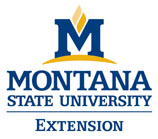Laboratory Self-Audit: General Housekeeping and Resource Conservation
GUIDE SECTIONS:
Purchasing - Do You?
- Buy only as much as you need for each project to avoid leftover materials
- Buy in bulk whenever you can, if you will be using the material before expiration. Form partnerships to purchase more items in bulk.
- Purchase recyclable products and products and packaging made from recycled materials
- Investigate possible alternative products for any environmentally unfriendly product you use
- Avoid buying products with components which are difficult to reuse or recycle, for example, glass and metal are easier to recycle than plastic in many areas.
Storage - Do You?
- Make sure all materials are well labeled
- Store products according to their individual recommendations for human and environmental health and safety
- Rotate products “first in, first out” to prevent their expiring on the shelf
- Use refillable containers for products purchased in bulk
- Inspect all containers for leaks and spills
- Use basins, pans or pallets to prevent and contain spills whenever possible
- Take care not to overcrowd shelves.
- Keep an accurate inventory of items in stock
Consider this ... Form partnerships with other academic programs or businesses for cooperative purchasing, waste reduction, recycling and proper disposal. For example, a local paint store may agree to assist you in managing painting waste or a local garage may help you manage mechanics lab waste. Or you may collaborate with other schools/programs in your geographic area to make certain management options feasible.
Commonly Recycled Materials - paper, cardboard, glass, cans, plastic - Do You?
- Reuse paper and cardboard “in house” first. Examples, scrap paper, note pads, shredded for small animal bedding, packaging material, storage boxes.
- Buy items in bulk to reduce numerous containers and packaging scraps.
- Recycle waste you cannot use anywhere else, based on what recycling opportunities are available in your community.
Water Quality
Rinse Water - Do You?
- Sweep dry waste or spills, don't use the hose as a broom
- Squeegee liquid spills, recovering product in a pan or container.
- Remember that contaminated rinse water may be hazardous waste and must be disposed of as such.
General conservation - Do You?
- Use water-efficient equipment and fixtures.
- Routinely inspect lines, fittings and fixtures.
- Fix all leaks and drips.
- Clean objects with dry methods whenever possible.
Floor drains/sumps - Do You?
- Know your drain system; obtain the plans for your drain and sump system.
- Keep all hazardous waste out of sumps, floor drains and storm drains.
- Ask your local sewer/water authority what substances may be put in the municipal treatment system.
Containment/Prevention - Do You?
- Inspect all containers and packaging for leaks or damage.
- Prevent rain or water leaks from flowing through chemicals.
- Remember not to store chemicals high on shelves where they may fall and burst.
- Use spill containment methods when mixing pouring and storing chemicals (like basins, pans, pallets; properly poured and sealed slabs, dams).
- Use dry clean-up methods whenever possible.
Air Quality
Ventilation - Do You?
- Periodically test to see if your ventilation system is functioning properly.
- Make sure the air movement system in your shop designed for the types of activities you taking place there.
- Follow all specific instructions when handling certain chemicals or engaging in certain activities. For example, mix outside or in well ventilated area as described.
- Have your ventilation system professionally inspected if you suspect it may be inadequate or not working properly.
Chemical emissions - Do You?
- Identify items stored in your classrooms and laboratories that could be giving off harmful fumes. Common items like carpet, foam, insulation and particle board can give off volatile organic compounds (VOCs) and other vapors such as formaldehyde.
- Make sure all lids and containers are properly sealed on chemicals.
- Store some items elsewhere if necessary -- always following manufacturers directions on storage.
Energy Conservation
Heating - Do You?
- Seal around windows and doors (unless it interferes with ventilation systems).
- Investigate alternative heat sources for your shop area or green house (examples: solar technologies; waste oil heaters - both for heating and to make use of surplus engine fluids).
- Keep temperatures in the workshop cooler (add clothing layers if needed).
Lighting - Do You?
- Turn off lights in unoccupied areas.
- Use energy efficient lighting.
- Use natural lighting whenever possible.
- Work with the rest of your school to recycle mercury vapor fluorescent lights.
Go back over the checklist and look for items that you didn't check. If they apply to your situation, these may indicate pollution prevention practices that you can improve on. List possible problem areas in your plan.
References: Waste Minimization (Pollution Prevention) & Indoor Air Quality Tools for Schools Action Kit-Montana Supplement, 1997, Montana State University Extension Service, U.S. Environmental Protection Agency and Montana PTA.
The P2 audit for Agricultural and Vocational Educators was produced by the Peaks to Prairies Pollution Prevention Information Center, funded by the US Environmental Protection Agency.







